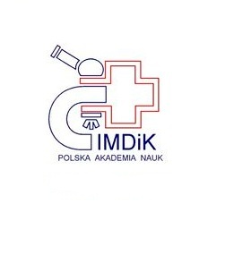- Search in all Repository
- Literature and maps
- Archeology
- Mills database
- Natural sciences
Advanced search
Advanced search
Advanced search
Advanced search
Advanced search

Object
Title: Rozwojowo-zależna indukcja biogenezy mitochondriów podczas różnicowania neuralnego ludzkich indukowanych pluripotencajalnych komórek macierzystych (hiPSC)
Contributor:
Bużańska, Leonora ( Promotor)
Publisher:
Instytut Medycyny Doswiadczalnej i Klinicznej im. M. Mossakowskiego PAN
Place of publishing:
Description:
Biblliografia zawiera 40 pozycji. ; 95 s.: il., wykr.tabl., fotogr. ; 30 cm.
Degree name:
Level of degree:
Degree discipline :
Degree grantor:
Mossakowski Medical Research Center PAS
Abstract:
Human induced pluripotent stem cells (hiPSC) generated from somatic cells through genetic reprogramming influenced greatly development of basic research in regenerative medicine as well as in vitro toxicology and pharmacology field. The progress in the “safemethods” of hiPSC generation (without the integration of the transgene into the host genome, eg., mRNA, recombinant proteins, miRNA’s, episomal vectors) gave an opportunity to use this cells in personalized cell therapy. In addition, the hiPSC serve as ethically non-controversial in vitro model of early human development which is an alternative to the model of human embryonic stem cells (hESC). The cycle of publications chosen for the theses investigates the influence of stimulation of mitochondrial biogenesis on the early stages of hiPSC neural differentiation. In this study, neural differentiation of hiPSC resulted in obtaining three distinct cells populations: neural stem cells (NSC), early neural progenitors (eNP), and neural progenitors (NP) however, the population of eNP cells has been characterized for the first time. Analysis of the gene and protein expression have shown that NSC, eNP and NP cell populations were significantly different in the level of unique markers for early neural development. The obtained cell populations were investigated for their sensitivity to compounds stimulating the mitochondrial biogenesis: Pyrroloquinoline quinone (PQQ) or idebenone (IDB), which were added independently. The results revealed significant changes in the cells viability, free radical level (ROS) and mitochondrial membrane potential (ΔΨm) upon the treatment with PQQ and IDB in all tested populations. The expression of genes related with mitochondrial biogenesis regulation: NRF1, PPARGC1A andTFAM were also significantly different. However exclusively at the eNP stage, after incubation with PQQ and IDB, all markers indicating stimulation of mitochondrial biogenesis were significantly elevated.This included upregulation of NRF1, PPARGC1A, TFAM gene expression, increased number of copies of mitochondrial DNA (mtDNA) and significant elevation of expression of proteinsimportant for mitochondrial function: COX-1 and SDHA. Gene expression analysis of neural differentiation upon PQQ treatment revealed in NSC and eNP stages of developmentsimultaneous increase in expression of PPARGC1A (main regulator of mitochondrial biogenesis) and astrocyte marker GFAPaccompanied with repression of the neuronal marker MAP2. IDB in all stages of development yielded a similar effect with the exception of eNP, where stimulation of theexpression of both GFAP and MAP2was observed, although the increase in GFAP expression was higher. The above data demonstrate the existence of developmental “window of sensitivity" for investigated factors (PQQ, IDB) inducing mitochondrial biogenesis at eNP stage of development and the possibility of influencing of the neural differentiation pathways via PQQ and IDB in favour of astrocytic fate.
Detailed Resource Type:
Resource Identifier:
Source:
IMDiK PAN, sygn. ZS401 ; click here to follow the link
Language:
Language of abstract:
Rights:
Creative Commons Attribution BY 4.0 license
Terms of use:
Copyright-protected material. [CC BY 4.0] May be used within the scope specified in Creative Commons Attribution BY 4.0 license, full text available at: ; -
Digitizing institution:
Mossakowski Medical Research Institute PAS
Original in:
Library of the Mossakowski Medical Research Institute PAS
Projects co-financed by:
Access:
Object collections:
- Digital Repository of Scientific Institutes > Partners' collections > Mossakowski Medical Research Institute PAS > Theses > Ph.D Dissertationes
- Digital Repository of Scientific Institutes > Literature > Thesis
Last modified:
Jan 5, 2023
In our library since:
Jan 30, 2020
Number of object content downloads / hits:
141
All available object's versions:
https://rcin.org.pl./publication/138917
Show description in RDF format:
Show description in RDFa format:
Show description in OAI-PMH format:
Objects Similar
Kraśnicka, Zuzanna Albrecht, Jan Mossakowski, Mirosław Jan (1929–2001)
Skowrońska, Marta
Skowrońska, Katarzyna
Jurga, Marcin
Habich, Aleksandra
Bużańska, Leonora

 INSTYTUT ARCHEOLOGII I ETNOLOGII POLSKIEJ AKADEMII NAUK
INSTYTUT ARCHEOLOGII I ETNOLOGII POLSKIEJ AKADEMII NAUK
 INSTYTUT BADAŃ LITERACKICH POLSKIEJ AKADEMII NAUK
INSTYTUT BADAŃ LITERACKICH POLSKIEJ AKADEMII NAUK
 INSTYTUT BADAWCZY LEŚNICTWA
INSTYTUT BADAWCZY LEŚNICTWA
 INSTYTUT BIOLOGII DOŚWIADCZALNEJ IM. MARCELEGO NENCKIEGO POLSKIEJ AKADEMII NAUK
INSTYTUT BIOLOGII DOŚWIADCZALNEJ IM. MARCELEGO NENCKIEGO POLSKIEJ AKADEMII NAUK
 INSTYTUT BIOLOGII SSAKÓW POLSKIEJ AKADEMII NAUK
INSTYTUT BIOLOGII SSAKÓW POLSKIEJ AKADEMII NAUK
 INSTYTUT CHEMII FIZYCZNEJ PAN
INSTYTUT CHEMII FIZYCZNEJ PAN
 INSTYTUT CHEMII ORGANICZNEJ PAN
INSTYTUT CHEMII ORGANICZNEJ PAN
 INSTYTUT FILOZOFII I SOCJOLOGII PAN
INSTYTUT FILOZOFII I SOCJOLOGII PAN
 INSTYTUT GEOGRAFII I PRZESTRZENNEGO ZAGOSPODAROWANIA PAN
INSTYTUT GEOGRAFII I PRZESTRZENNEGO ZAGOSPODAROWANIA PAN
 INSTYTUT HISTORII im. TADEUSZA MANTEUFFLA POLSKIEJ AKADEMII NAUK
INSTYTUT HISTORII im. TADEUSZA MANTEUFFLA POLSKIEJ AKADEMII NAUK
 INSTYTUT JĘZYKA POLSKIEGO POLSKIEJ AKADEMII NAUK
INSTYTUT JĘZYKA POLSKIEGO POLSKIEJ AKADEMII NAUK
 INSTYTUT MATEMATYCZNY PAN
INSTYTUT MATEMATYCZNY PAN
 INSTYTUT MEDYCYNY DOŚWIADCZALNEJ I KLINICZNEJ IM.MIROSŁAWA MOSSAKOWSKIEGO POLSKIEJ AKADEMII NAUK
INSTYTUT MEDYCYNY DOŚWIADCZALNEJ I KLINICZNEJ IM.MIROSŁAWA MOSSAKOWSKIEGO POLSKIEJ AKADEMII NAUK
 INSTYTUT PODSTAWOWYCH PROBLEMÓW TECHNIKI PAN
INSTYTUT PODSTAWOWYCH PROBLEMÓW TECHNIKI PAN
 INSTYTUT SLAWISTYKI PAN
INSTYTUT SLAWISTYKI PAN
 SIEĆ BADAWCZA ŁUKASIEWICZ - INSTYTUT TECHNOLOGII MATERIAŁÓW ELEKTRONICZNYCH
SIEĆ BADAWCZA ŁUKASIEWICZ - INSTYTUT TECHNOLOGII MATERIAŁÓW ELEKTRONICZNYCH
 MUZEUM I INSTYTUT ZOOLOGII POLSKIEJ AKADEMII NAUK
MUZEUM I INSTYTUT ZOOLOGII POLSKIEJ AKADEMII NAUK
 INSTYTUT BADAŃ SYSTEMOWYCH PAN
INSTYTUT BADAŃ SYSTEMOWYCH PAN
 INSTYTUT BOTANIKI IM. WŁADYSŁAWA SZAFERA POLSKIEJ AKADEMII NAUK
INSTYTUT BOTANIKI IM. WŁADYSŁAWA SZAFERA POLSKIEJ AKADEMII NAUK




































